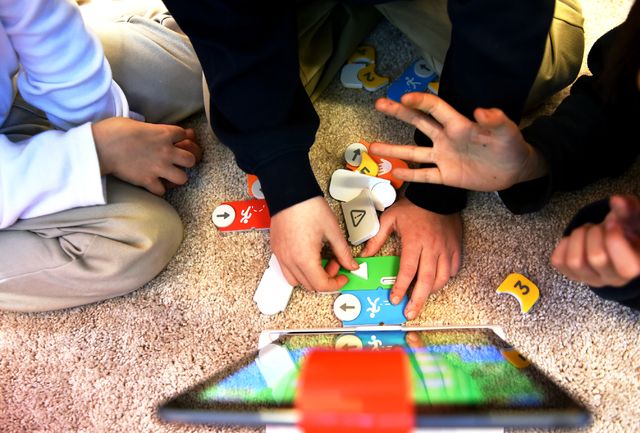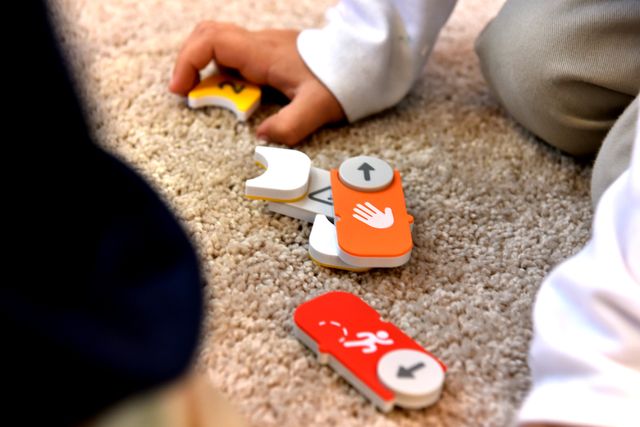Click here to subscribe today or Login.
FORTY FORT — Gigi Ruderman was clearly in charge, telling Josh Hufford he had to “switch that down!” and “go five!” And both Josh and Isla Gargone, the third member of their kindergarten computer programming team, didn’t seem to mind.
“She’s the captain!” Isla said without envy.
The trio took turns programming an animated critter on an iPad to go up, down, right or left a specific number of steps. This is intended to be a lesson in computer coding at its simplest. Bad coding walked the toon into a tree or pond. Good coding revealed strawberry-like tidbits of different colors. Their favorite?
“Purple!” all three agreed without debate. But it was not an aesthetic choice. They got different points for each color, and purple offered the biggest reward.
Simple exercises in coding — usually without a computer — are not uncommon this early. But this exercise is relatively new. The students uses Osmo, a set of pieces that magnetically snap together to create a visual sequence of what should happen on the screen. One long rectangular piece makes the character move. An arrow on that piece sets the direction. A smaller piece with a number snaps on, setting the number of steps. Change direction by starting with a second rectangular piece with the arrow.
Under Gigi’s firm oversight, her team got where it wanted to go more often than not. Across the room, Beau Cawley’s avatar kept walking into the water while trying to get to a pie on an island.
“Some of them have trouble with the concept of steps,” teacher Elizabeth Schmaltz said. “They just move the pieces around so it changes.”
Osmo is deceptively simple, tech-wise. It looks like the pieces are electronically transmitting information to the iPad; in reality, it’s just a mirror reflecting the arrangement of the pieces to the built-in camera; The pad then translates the image into screen action.
Gigi may have been good at programming, she was great at managing.
Seeing that Josh had started messing up on the project, she ordered him to “destroy” the order of the pieces, prompting a rigorous disarray on the floor.
Yes, she conceded, she can be pushy.
“But I’m not as annoying as my annoying brother,” she insisted, deciding to be more specific. “My incredibly annoying brother!”
Message received, no code needed.







